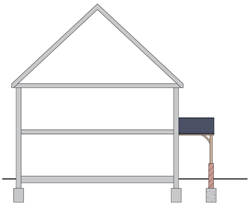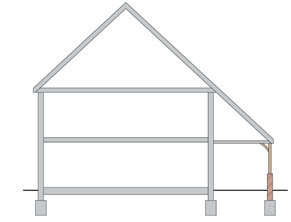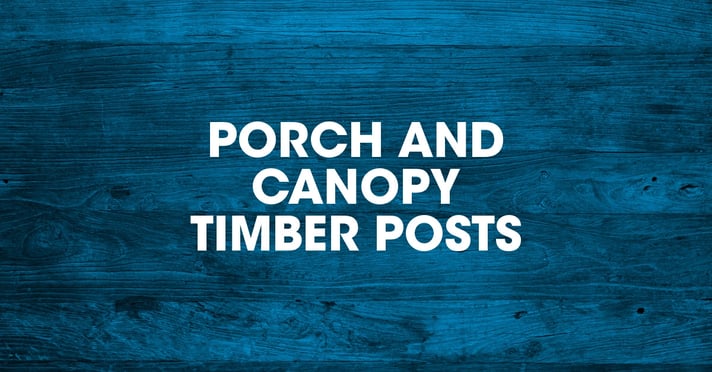

Contact with the ground
Timber posts should not be built into the ground as this can lead to the timber post absorbing excessive amounts of water or moisture which can lead to decay reducing the service life of the post.
DPC material is often sandwiched around the timber post and the ground as an attempt to protect the buried post, however any rainwater running down the post can be absorbed by the end grain of the post, and is not a suitable solution. The posts must not be in direct contact with the ground and it should be supported off a suitable raised foundation support.
Timber posts should be adequately treated to provide the required durability and where they are cut on site, the ends must also be treated.
In addition, the following should be adhered to:
- Timber posts should not be built into the ground or sunk into pockets.
- Metal connectors should be used when timber posts are installed onto brickwork or concrete supports.
- The metal support must provide a clear air path to prevent the timber post absorbing moisture whilst also providing drainage and ventilation.
- All metal fixings must be made from corrosion resistant materials (such as stainless steel) which have been hot-dipped galvanised.
- Metal fixings should be verified to be suitable with the treated timber.
- The same kind of metal for both fixings and connectors should be used.
Warranty stance
Timber posts should be of a suitable durability and use class and be appropriately preservative treated. Timber posts should not be in direct contact with the ground and any metal fixings and supports should be appropriate for their end use.

